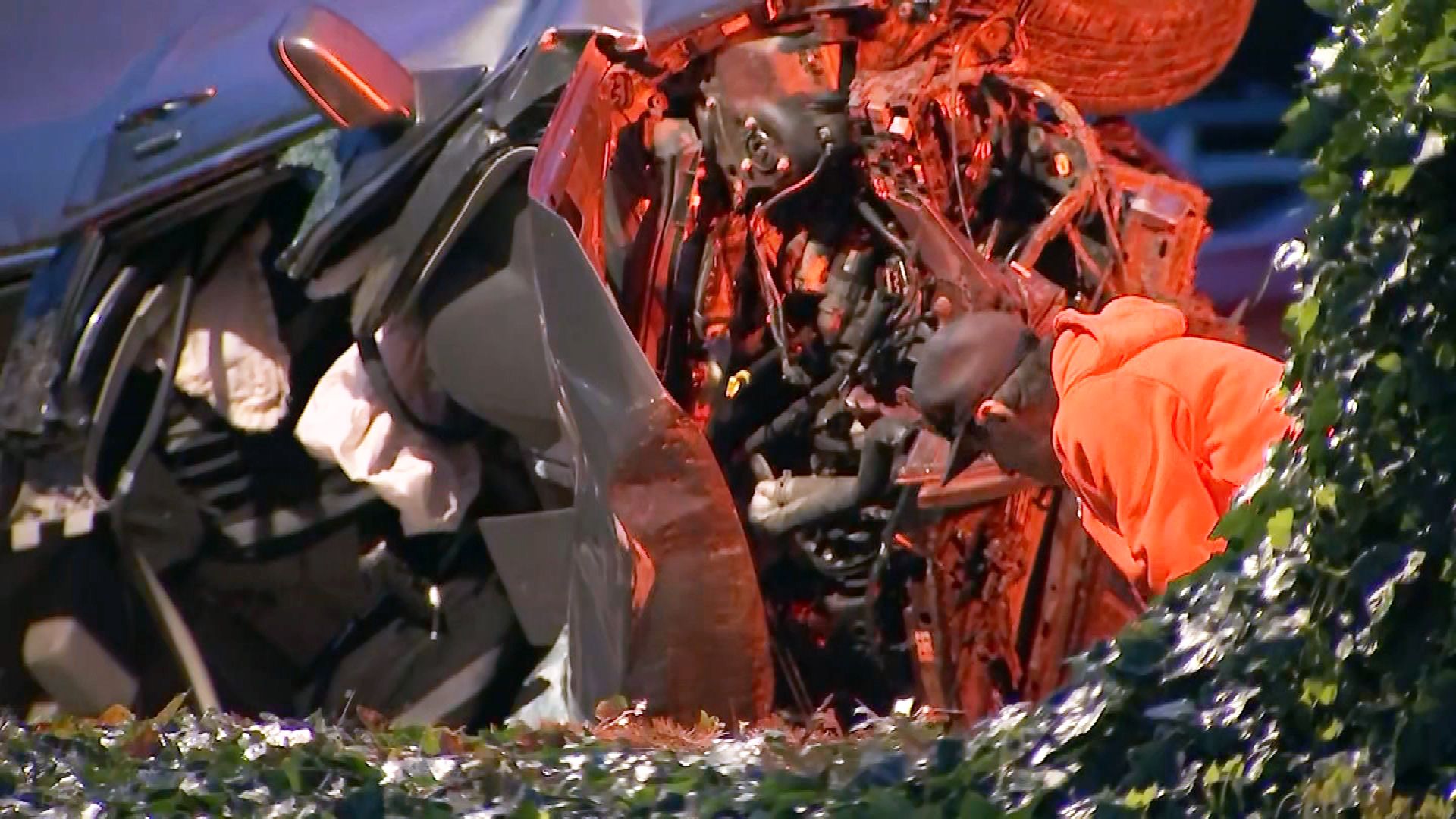Debunking Nikki Catsouras's Car Crash Explained: The Truth Revealed
Who is Nikki Catsouras? What really happened in the Catsouras case?
Nikki Catsouras was an 18-year-old girl who died in a car accident in 2006. The case gained notoriety because of the graphic photos of her body that were posted online. The photos were taken by a passerby and posted on the website rotten.com. The case raised questions about privacy, ethics, and the role of the media in society.
The Catsouras case is a reminder of the importance of privacy and the need to be careful about what we post online. It is also a reminder of the power of the media and the need to be critical of what we see and hear.
| Name | Birth | Death |
|---|---|---|
| Nikki Catsouras | March 4, 1988 | October 31, 2006 |
Nikki Catsouras Case
- The accident
- The graphic photos
- The media coverage
- The public reaction
- The legal issues
- The ethical issues
The Accident
On October 31, 2006, Nikki Catsouras was driving her father's Porsche Carrera on the 22 Freeway in California. She lost control of the car and crashed into a toll booth. She was killed instantly.
The Graphic Photos
After the accident, a passerby took graphic photos of Catsouras' body. The photos were posted on the website rotten.com. The photos were extremely disturbing and caused a great deal of public outrage.
The Media Coverage
The Catsouras case received a great deal of media coverage. The media coverage was often sensationalistic and focused on the graphic photos. The media coverage also raised questions about privacy, ethics, and the role of the media in society.
The Public Reaction
The public reaction to the Catsouras case was mixed. Some people were outraged by the graphic photos and the media coverage. Others felt that the public had a right to see the photos and that the media was simply doing its job.
The Legal Issues
The Catsouras case raised a number of legal issues. The passerby who took the photos was charged with a felony. The website rotten.com was sued by Catsouras' family. The legal issues in the Catsouras case are still being debated today.
The Ethical Issues
The Catsouras case raised a number of ethical issues. The most important ethical issue is the question of privacy. The passerby who took the photos of Catsouras' body violated her privacy. The media also violated her privacy by publishing the photos. The Catsouras case also raised questions about the ethics of journalism. Some people felt that the media should not have published the graphic photos. Others felt that the media had a right to publish the photos because they were newsworthy.
Nikki Catsouras Case
The Nikki Catsouras case, involving a fatal car accident and the subsequent posting of graphic photos online, brought to light crucial issues related to privacy, ethics, and the role of media. Here are six key aspects that encapsulate the essence of the case:
- Privacy Violation: The unauthorized taking and distribution of graphic images of Nikki's body violated her privacy and caused immense distress to her family.
- Media Sensationalism: The media's coverage of the case often focused on the sensational aspects, fueling public curiosity while disregarding ethical considerations.
- Legal Implications: The legal proceedings surrounding the case addressed issues of copyright infringement, privacy rights, and the limits of freedom of expression.
- Ethical Dilemma: The case raised questions about the ethical responsibilities of individuals and media outlets in handling sensitive and graphic content.
- Public Reaction: The public's response to the case was divided, with some expressing outrage at the privacy violation and others defending the media's right to report on newsworthy events.
- Legacy and Impact: The case has had a lasting impact on discussions about privacy, media ethics, and the boundaries of public interest in personal tragedies.
Overall, the Nikki Catsouras case highlights the complex interplay between privacy rights, media freedom, and the ethical responsibilities of individuals and organizations in the digital age. It serves as a reminder of the need for sensitivity, respect, and ethical considerations when dealing with sensitive and tragic events.
Privacy Violation
The unauthorized taking and distribution of graphic images of Nikki Catsouras' body was a gross violation of her privacy. Her family has had to endure immense distress as a result of these actions.
- Unauthorized Taking of Images: The individual who took the graphic images of Nikki's body did so without her consent and in violation of her privacy rights. This act was a clear invasion of her privacy and a violation of her right to control her own image.
- Distribution of Images: The distribution of the graphic images of Nikki's body on the internet further violated her privacy. These images were shared widely and without her consent, causing her family and friends immense distress.
- Impact on Family: The unauthorized taking and distribution of the graphic images of Nikki's body has had a devastating impact on her family. They have had to relive the trauma of her death over and over again as the images continue to circulate online.
- Legal Implications: The unauthorized taking and distribution of the graphic images of Nikki's body may have violated several laws, including privacy laws and copyright laws. Her family has pursued legal action against those responsible for these actions.
The privacy violation in the Nikki Catsouras case highlights the importance of protecting individuals' privacy, especially in the digital age. It is crucial to respect the privacy of others and to obtain consent before taking or distributing images of them.
Media Sensationalism
The media's coverage of the Nikki Catsouras case was often sensationalistic, focusing on the most shocking and graphic aspects of the story. This type of coverage can have a number of negative consequences, including:
- Exploitation of Tragedy: Sensationalistic media coverage can exploit tragedy for profit. In the Nikki Catsouras case, the media's focus on the graphic images of her body served to titillate and shock viewers, rather than inform them about the facts of the case.
- Disrespect for the Victims: Sensationalistic media coverage can be disrespectful to the victims of tragedy. In the Nikki Catsouras case, the media's focus on the graphic images of her body violated her privacy and caused further pain to her family.
- Public Misinformation: Sensationalistic media coverage can lead to public misinformation. In the Nikki Catsouras case, the media's focus on the graphic images of her body led many people to believe that she was driving recklessly, when in fact she was not.
The media's sensationalistic coverage of the Nikki Catsouras case highlights the need for ethical journalism. Journalists have a responsibility to report the news accurately and respectfully, without sensationalizing tragedy.
Legal Implications
The legal proceedings surrounding the Nikki Catsouras case raised important questions about copyright infringement, privacy rights, and the limits of freedom of expression. The unauthorized taking and distribution of graphic images of Nikki's body raised copyright concerns, as the images were protected by copyright law. The distribution of the images also violated Nikki's privacy rights, as she had not consented to the use of her image in this manner. The case also raised questions about the limits of freedom of expression, as some argued that the media had a right to publish the graphic images because they were newsworthy.
The legal proceedings in the Nikki Catsouras case resulted in a number of important rulings. The court ruled that the unauthorized taking and distribution of the graphic images of Nikki's body violated her copyright and privacy rights. The court also ruled that the media did not have a right to publish the graphic images because they were not newsworthy. These rulings have important implications for the protection of privacy rights and the limits of freedom of expression in the digital age.
The legal implications of the Nikki Catsouras case are significant. The case has helped to clarify the law surrounding copyright infringement, privacy rights, and the limits of freedom of expression. The rulings in the case have helped to protect the privacy rights of individuals and have limited the ability of the media to publish graphic and disturbing images without consent.
Ethical Dilemma
The Nikki Catsouras case raised important ethical questions about the responsibilities of individuals and media outlets in handling sensitive and graphic content. The case involved the unauthorized taking and distribution of graphic images of Nikki's body, which violated her privacy and caused immense distress to her family. The media's coverage of the case was often sensationalistic, focusing on the most shocking and graphic aspects of the story, which further violated Nikki's privacy and disrespected her family.
- Respect for the Deceased: Individuals and media outlets have a responsibility to respect the deceased and their families. This includes respecting their privacy and not sensationalizing their deaths.
- Privacy Rights: Individuals have a right to privacy, even after their death. This includes the right to control the use of their image and to prevent the distribution of graphic images of their body without their consent.
- Media Responsibility: Media outlets have a responsibility to report the news accurately and respectfully. This includes avoiding sensationalism and respecting the privacy of the deceased and their families.
- Public Interest: The public has a right to know about important events, but this right must be balanced against the privacy rights of individuals and the need to respect the deceased and their families.
The Nikki Catsouras case highlights the need for ethical guidelines for handling sensitive and graphic content. Individuals and media outlets must be mindful of the privacy rights of the deceased and their families, and they must avoid sensationalism and exploitation. The public also has a responsibility to respect the privacy of the deceased and to avoid sharing graphic images without consent.
Public Reaction
The public reaction to the Nikki Catsouras case highlights the complex and often conflicting values that masyarakat holds. On the one hand, many people were outraged by the privacy violation and the media's sensationalistic coverage of the case. They felt that Nikki's family's privacy had been violated and that the media had exploited her death for profit. On the other hand, some people defended the media's right to report on newsworthy events, arguing that the public had a right to know about the case.
The public's reaction to the Nikki Catsouras case also raises important questions about the role of the media in a free and democratic society. The media has a responsibility to inform the public about important events, but it must also respect the privacy rights of individuals. In the Nikki Catsouras case, many people felt that the media had crossed the line and that its coverage of the case was unethical.
The public's reaction to the Nikki Catsouras case is a reminder that there are no easy answers when it comes to balancing the public's right to know with the privacy rights of individuals. The media must be mindful of the potential harm that its coverage can cause and must strive to report on newsworthy events in a responsible and ethical manner.
Legacy and Impact
The Nikki Catsouras case has had a significant and lasting impact on discussions about privacy, media ethics, and the boundaries of public interest in personal tragedies. Here's how:
- Heightened Awareness of Privacy Rights: The case brought widespread attention to the importance of privacy rights, particularly in the digital age. It highlighted the need for laws and ethical guidelines to protect individuals from the unauthorized taking and distribution of their images and personal information.
- Re-evaluation of Media Ethics: The media coverage of the case sparked a debate about the ethical responsibilities of journalists in reporting on sensitive and graphic content. The sensationalistic and disrespectful coverage of Nikki's death led many to question the media's role in exploiting tragedy for profit.
- Clarification of Public Interest Boundaries: The case helped to clarify the boundaries of public interest in personal tragedies. While the public has a right to know about important events, this right must be balanced against the privacy rights of individuals and the need for respectful reporting.
The Nikki Catsouras case serves as a reminder of the ongoing need to protect privacy rights, uphold ethical journalism standards, and define the limits of public interest in personal tragedies. It continues to shape discussions and policies related to these critical issues.
FAQs About Nikki Catsouras Case
The Nikki Catsouras case raised several important questions and concerns. Here are answers to some frequently asked questions:
Question 1: Why did the media publish the graphic images of Nikki Catsouras' body?
The media's decision to publish the graphic images of Nikki Catsouras' body was highly controversial. Some argued that the images were newsworthy and that the public had a right to see them. Others felt that the publication of the images was a violation of Nikki's privacy and caused further pain to her family.
Question 2: What legal issues were involved in the Nikki Catsouras case?
The Nikki Catsouras case involved several legal issues, including copyright infringement, privacy rights, and the limits of freedom of expression. The unauthorized taking and distribution of the graphic images of Nikki's body violated her copyright and privacy rights. The media's publication of the images also raised questions about the limits of freedom of expression.
Summary: The Nikki Catsouras case highlighted the complex interplay between privacy rights, media freedom, and the ethical responsibilities of individuals and organizations in the digital age. It serves as a reminder of the need for sensitivity, respect, and ethical considerations when dealing with sensitive and tragic events.
Conclusion
The Nikki Catsouras case has left a lasting impact on our understanding of privacy rights, media ethics, and the boundaries of public interest in personal tragedies. The unauthorized taking and distribution of graphic images of Nikki's body violated her privacy and caused immense distress to her family. The media's sensationalistic coverage of the case further violated her privacy and disrespected her family.
The legal proceedings in the case resulted in important rulings that clarified copyright laws, privacy rights, and the limits of freedom of expression. These rulings have helped to protect the privacy rights of individuals and have limited the ability of the media to publish graphic and disturbing images without consent.
The Nikki Catsouras case serves as a reminder of the importance of protecting privacy, upholding ethical journalism standards, and defining the limits of public interest in personal tragedies. It continues to shape discussions and policies related to these critical issues.

Nikki Catsouras The Tragic Tale Of A Young Life Lost

Nikki XRay Nikki XRay

Digital XRay Nikki XRay